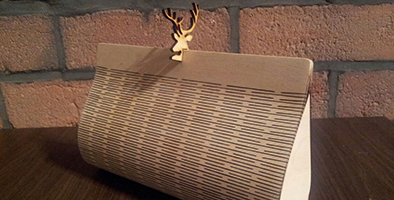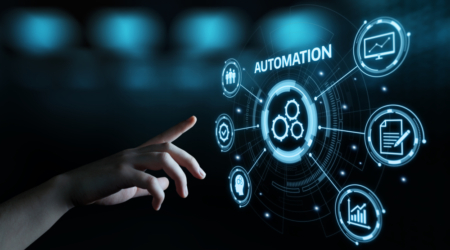Since the discovery of lasers in the late 1950s, they have revolutionized the way we live. From barely noticeable changes like the barcode scanners at every till to the incredible experimental uses scientists are discovering, lasers are shaping the future.
There are probably hundreds of ways we can use lasers but this list covers a few of the most interesting: from the banal and everyday to the weird and the wonderful. So if you have a project or an idea that isn’t quite getting off the ground – perhaps this list will help.
Barcode scanner
With one at every till, the barcode scanner is probably the most familiar use for lasers. People did fear the Star Wars-esque red light to begin with but once we got used to the system, there was no going back.
DVD player
A DVD is made using a laser that burns bumps (called pits) onto the surface. Each bump represents a zero. Where there is no bump (called lands) a 1 is represented. The laser in the DVD player scans the DVD as it spins. The light that hits the lands is reflected to a photocell, whereas the light hitting the pits is scattered, thus 0s and 1s: no reflected light and reflected light. This binary code is then decoded and converted into a changing pattern of electric currents and this is transformed into the film you watch.
Laser pointer
Popular with lecturers, laser pointers are easily available. They are also good for amateur astronomers as green lasers are visible at night and are used to point out individual stars. It goes without saying that pointers should be used with caution and never pointed at planes or in people’s eyes.
Police speed measurer
Speeders be warned, police use hand held lasers to measure the speed of passing cars. This works by shining the laser at the car and then measuring the time it takes to be reflected back.
Fibre optics
Not just pretty lights, fibre optics are used for cable TV, high speed communication and endoscopes. The fibre optic cable is made of incredibly thin strands of glass or plastic. A laser is used to convert information into a series of light pulses that are sent down the cable and translated at the other end by a photoelectric cell (a bit like a DVD player).
Laser eye surgery
Lasers can be used for eye surgery because they can be trained precisely on a very small area. There are a number of treatments available that can all improve vision and have revolutionized the way we treat problems with sight.
Laser skin treatment
Also known as laser resurfacing, laser skin treatments can help your skin look younger and healthier. This is particularly good for combatting the effects of acne, wrinkles, scars and blotches. The laser is used to remove the outer layers of skin and encourage new growth.
Laser cutting
Laser cutting has revolutionised the manufacturing industry. Not only is it more efficient, it is incredibly accurate and produces high quality pieces. And you can use lasers to cut all sorts of materials. At Subcon Laser, we could talk about the benefits of laser cutting all day long but we’ll settle for this video of the letters we made for the Rust Garden:
Lunar laser ranging
Lasers have been used to measure the distance between Earth and the Moon since retroreflectors were planted on the Moon during the Apollo program. The lasers are aimed at the Moon from Earth and the distance is then calculated: distance = (speed of light x time taken for light to reflect) / 2. With these measurements we know that the Moon is spiralling away from us and Einstein’s theory of gravity predicts the Moon’s orbit to within the accuracy of the laser ranging measurements.
3D Laser scanner
The 3D scanner can be used to survey objects and is particularly useful for archaeological investigation. Once scanned, objects can be reproduced using 3D printing and then the copy can be examined in more detail.
Computer mouse
Remember the rollerball mice back in the day? It took almost no effort for them to get stuck and never work again. Now lasers are used to track the surface of your desk and translate this movement onto the computer screen. Amazingly, there are also laser mice that work on glass and glossy surfaces.
LiDAR
This is another form of 3D laser scanning but instead of scanning objects, this scanner scans large areas of land. It is a great tool for making high resolution maps and it was first used to map the surface of the moon in 1971 during the Apollo 15 mission.
Laser printer
Laser printers work by translating the data stream from the computer into binary code. A photoreceptor drum is charged, giving it a positive charge across its surface. The positive charge represents the white areas of the page. A laser is used to erase the positive charge on the drum to create negatively charged black areas.
The toner is given a positive charge so that when the ink roller touches the photoreceptor drum, the ink powder only sticks to the negatively charged areas. The paper is then rolled through and the image is transferred from the drum to the page. This is then heated to fuse the toner to the paper.
Laser cooling
There are a number of methods of laser cooling but broadly speaking the process relies on the fact that when an atom absorbs and re-emits a photon, it changes momentum. This change in momentum is what causes the object as a whole to cool.
Diamond cutting
Diamonds are cut to emphasise their natural sparkle. Deciding how to cut a diamond is harder than it sounds though. As an incredibly strong material, diamonds are difficult to work with, and as there is so much profit to be made from them, getting as many cut stones from a single lump of rock is important. Lasers are used to ensure fast precision cutting.
Laser scalpel
Using laser scalpels helps to minimize bleeding and reduces the amount of swelling and discomfort after the procedure. The procedure usually takes less time compared to traditional scalpel surgery and reduces the risk of infection. The laser is also incredibly precise making it a good option for oral surgery among other fiddly locations.
Photodynamic Therapy for cancer
Also known as PDT, this therapy uses a drug called a photosensitizer or photosensitizing agent which is activated by a laser. The drug is injected into the body and is absorbed by all cells but crucially stays longer in cancer cells. The tumour is then exposed to laser light of a certain wavelength. The photosensitizer absorbs the light and produces an active form of oxygen that destroys nearby cancer cells. It can also destroy blood vessels in the tumour preventing necessary nutrients in the blood flow getting through. PDT may also activate the immune system against the tumour.
Laser welding
Laser beam welding (or LBW) is particularly dominant in the automotive industry as it is effective for high volume projects. The main advantages of using lasers is their easy automation with robotic machinery and higher quality welds than other methods might provide.
Power whitening
This form of teeth whitening works in a similar way to usual teeth whitening in that a bleaching product is painted onto your teeth. The difference is that the bleach is then activated using a laser. This activation speeds up the reaction of the whitening produce and the colour changes more quickly.
Tattoo removal
Tattoo removal will probably require a few treatments and the area of skin is more likely to scar with thicker skin but laser removal is still considered the best method. The laser breaks down the ink particles in the tattoo and the immune system then fights them off mimicking the natural fading that time and sun exposure would cause. Darker pigments are easier to remove with lasers as they will absorb the laser energy better.
Laser drilling
The laser is pulsed onto a material causing it to melt or burn away and form a hole. Because lasers are incredibly accurate, the diameter of the hole created can be as small as 0.5 microns!
Laser engraving
Laser engraving works in a similar way to laser cutting but the laser only takes away some of the material’s surface rather than cutting all the way through. CAD is used to ensure that the laser avoids a criss-crossing path and therefore only passes over each area once.
Laser light displays
It’s not a party until the lasers come out. Whether they are projecting sharp images on the walls and ceilings or looking awesome in the midst of theatrical smoke, lasers are the go-to light in night clubs. You can even use mirrors to bounce the lasers into different positions to create laser sculptures.
Marking precious gems with ID number
The precision of laser engraving is really demonstrated with the ability to carve an ID number into a precious stone that is undetectable to the human eye. You could even have your home address engraved and still have to use a microscope to find it.
Laser marking
Where laser engraving removes material, laser marking merely discolours the material. This is useful for marking parts with barcodes or serial numbers.
Hologram
You can find holograms on all sorts of things: from your driving licence and bank cards to the fiver in your pocket. To make these holograms, a laser is used to project the image using a mirror and a partial mirror. This means that the beam is split into two beams that then meet again on the recording material. The light waves in the two beams intersect and interfere with each other and it is this interference that cause the imprint on the recording material. Finally, a laser is shone on the material and the hologram is diffracted by the holograms surface pattern, producing the final holographic image.
Bubblegram
A bubblegram is a block of glass or plastic containing a laser generated 3D design inside. To make a bubblegram in plastic, laser beams intersect and induce a chemical reaction in appropriately doped plastic creating bubbles where the plastic has a different index of refraction.
Power beaming
Power beaming is a method of transferring energy via laser beam. Electricity is converted into a laser beam that is then pointed at a photovoltaic cell. The cell then returns the energy from the laser back into electricity. This method has been explored by NASA where they provided proof-of-concept with a lightweight unmanned plane powered by a laser beam.
Bird deterrent
Laser bird deterrents are most effective at dawn and dusk, though they still work during the day. The method relies on birds being startled by the contrast between ambient light and the laser light.
Camera shutter speed (femtosecond stroboscopy)
Ultrafast photography is incredibly useful for scientists who are researching events that take place in less than a second. A millionth of a billionth of a second? Enter femtosecond stroboscopy which uses pulsing lasers. The laser acts like a strobe in order to photograph a rapidly moving object. Using femtosecond long pulses, the motion of atoms and molecule can be frozen.
Photolithography
Photolithography is the process of using a laser to print patterns onto a surface or silicon wafer. It is the main technique for creating the microstructure of a computer chip as it is small and precise enough.
Fingerprint recognition
Laser beams are used by police to scan a computerized database of fingerprints, taking only a few seconds to find the right culprit. Police also use lasers to detect traces of bodily secretions, such as sweat, a process that still works with old evidence.
 National Ignition Facility
National Ignition Facility
Based in California, NIF aimed to achieve fusion ignition with high energy gain using a laser to heat a small amount of hydrogen fuel. Though the facility declared testing complete in 2010, the facility closed in 2012 as it failed to reach the conditions needed for ignition to occur.
Quantum information processing
The quantum computer is a theoretical computing system making direct use of quantum mechanical phenomena. The trapped ion quantum computer uses qubits stored in stable stable electronic states of ions suspended in free space using electromagnetic fields. Lasers are used to induce coupling (interaction) between the qubit states or coupling between the internal qubit states and the external motional states.
Port wine stain removal
Laser treatment for port wine stains is an effective way to fade the discolouration and to avoid the ‘cobblestone’ effect that may develop with adulthood. The laser light is absorbed by the red pigment in the blood vessels in the port wine stain which produces the heat that treats the stain. Each time the laser touches the skin it treats an area only a few millimetres across – a dot. One session of treatment includes lots of these dots and best results come with a few sessions.
Interferometry (used in experiments searching for gravitational waves)
The Laser Interferometer Gravitational-Wave Observatory (LIGO) uses two lasers in their efforts to detect gravitational waves. A laser beam is split sending half of it off to a right angle. This laser is then bounced off another mirror and is reintroduced to the original laser beam.
The purpose of this is to make the laser beams destructively interfere with each other and no light should arrive at the photodiode at the end of the experiment. However, if a gravitational wave passes through, the distances both lasers are travelling will change and the laser beams will come in phase (be synchronized) and some light will hit the photodiode.
On February 11 2016, LIGO announced the first observation of gravitational waves.


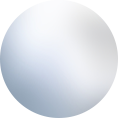
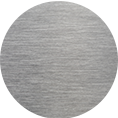
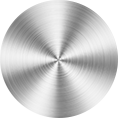

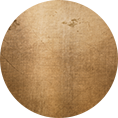







 National Ignition Facility
National Ignition Facility
